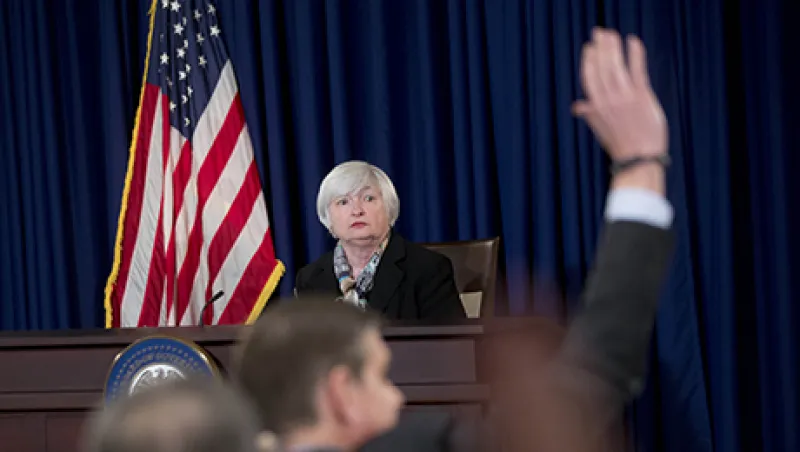The most recent meeting of the Federal Market Open Committee, in late July, brought few surprises. The Federal Reserve intends to continue to taper its asset purchase facility and is eyeing eventual rate hikes as the U.S. economy in general — and the labor market in particular — improves. With expectations for a generational shift in the direction of bond yields and debate between economists and market strategists over the threat of inflation, wealth managers find themselves at a fork in the road as they consider specific estate planning and retirement strategies that are sensitive to changing interest rates.
Some of the most popular estate and retirement techniques for wealthy families in recent years, given how such instruments are structured, are prone to underperform in periods of rising yields. One such example is grantor retained annuity trusts. Usually referred to as GRATs, they are a popular multigenerational transfer vehicle that allows money to pass to younger family members without triggering U.S. gift taxes. Since the donor receives an annuitized annual payment from the trust for a fixed period of time before the remaining balance passes on to the beneficiary, a higher-rate environment may make simply paying the gift or estate tax more attractive.
“Interest rates are only one factor in determining whether or not a GRAT would be an appropriate estate-planning vehicle for a family,” says Whitney Kenter, a partner with Matter Family Office, a wealth management firm headquartered in St. Louis that handles more than $5 billion in net worth for its client families. Kenter notes that other critical factors impacting the decision would be the term of the GRAT and the expected appreciation of the assets being transferred. “So, while the rising interest rates may decrease the ultimate transfer to successor generations, it is not the only factor to be considered,” she says.
For entrepreneurs approaching retirement, cash balanced plans are a popular strategy. These structures resemble a hybrid of a defined contribution plan and a defined benefit plan. A portion of an employee’s salary is allocated to the plan, which earns a fixed rate of return from the sponsors. Although the cash balance plan structure is most commonly associated with converted defined benefit plans whose sponsors restructured to limit liabilities, they are now frequently deployed by closely held companies to benefit principals and partners nearing retirement, since they allow a significant amount of peak income to be shielded from taxation. The fixed returns yielded by the plans may make them less attractive in an environment of steeply rising interest rates and inflation. Timing the plans with regard to hikes in interest rates and bond yields is thus critical.
“I give the Fed a lot of credit for clearly communicating their intentions and not disrupting the markets to date,” says Scott Clemons, chief investment strategist at Brown Brothers Harriman Private Banking in New York. “Interest rates will move higher in the coming years, but only moderately, as savings continue to outweigh demand in the system.” Clemons adds that under some macroeconomic scenarios, including a quick deployment of the cash built up on many corporations’ balance sheets, wage-led inflation and concerns over the sustainability of entitlements in the U.S., his projection could be subject to change. For now, however, Brown Brothers Harriman sees a manageable path ahead for wealth advisers.
Yet not all wealth management firms are as certain that the Federal Reserve will so smoothly be able to manage a program of easing. In a recent research report, David Rosenberg, chief economist and strategist of Gluskin Sheff + Associates, warned that the Fed may fall behind the inflation curve and have to play catch up. Gluskin Sheff is a Toronto-headquartered independent wealth management firm that as of June 2014 had C$7.5 billion ($6.84 billion) under management. “That the Fed has waited this long attests to how nervous it is to take the punch bowl away at this point in the cycle,” says Rosenberg. He views signals from wage and salary data in the most recent U.S. gross domestic product releases as a sign that the central bank may be forced to adjust rates more rapidly and aggressively than how markets are pricing at the moment.
Ultimately the decision to pull the trigger on any wealth management strategy needs to take into account an array of factors, many of which are client specific. For advisers who are guiding these decisions, the answers beyond the macroeconomic horizon are making that task that much more difficult.
Get more on registered investment advisers.






